After a year of unprecedented challenges, Apollo asked artists to look back at moments that have cheered them up in 2020
Edmund de Waal
The Library of Exile opened at the British Museum in March and closed ten days later. Then it re-opened and re-closed. And so on… But the public programme hosted by the museum in conjunction with PEN went online and became free. And so many thousands of people heard extraordinary voices talking about exile and translation, migration and literature. There were questions and debate and a sense of a great diaspora of engaged people who would never have bought a ticket for a talk at 6.30pm in Bloomsbury. The last event had people from thirty countries. I find this wonderful. And profoundly hopeful.
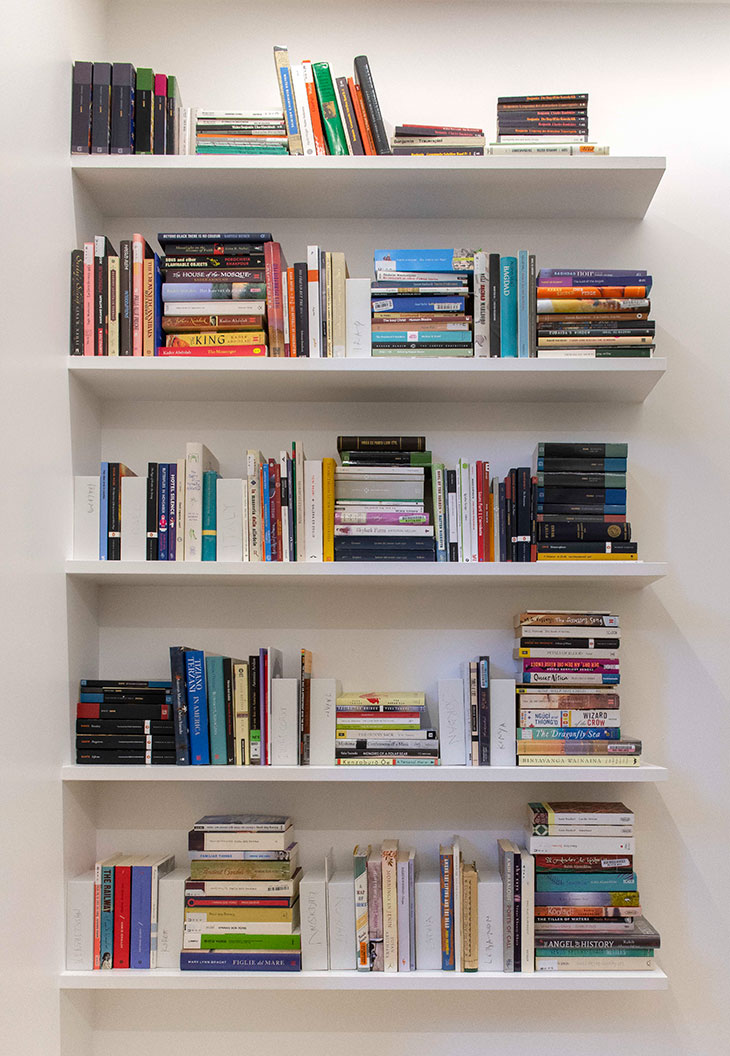
View of Edmund de Waal’s Library of Exile at the British Museum in 2020. Photo: © The Trustees of the British Museum
Caroline Walker
Despite all the closures and postponements of exhibitions and projects, my show at Ingleby Gallery in Edinburgh – a series of paintings of my mum, nearly two years in the making – was able to go ahead, and with a much more extensive body of work than I had expected, thanks to the extra studio time that lockdown brought. It was a really positive moment for me to see my work hanging in such a beautiful gallery space and I felt very lucky, in a year when so many artists have had to make do with online exhibitions or early closures of their shows.
Eric Fischl
The Sag Harbor Church is a project my wife, April Gornik, and I have been working on for the last two years which is just now coming to the end of the renovation phase. Programming at the church will hopefully begin by mid January – whatever that means, given all the uncertainty and constantly changing Covid restrictions. This former Methodist Church was built in 1835 and deconsecrated in 2004. We took possession of the property in 2018 with the purpose of creating an arts centre for the Sag Harbor community [in Suffolk County, New York]. Along with programmes designed to separate ‘creativity’ from ‘art’ – so as to make it less intimidating for more people to participate in the expansive experience one gets from triggering the creative part of the brain – we will also be doing exhibitions, workshops, lectures, conferences and running an artist-in-residence programme throughout the year. Our goal is to bring to the forefront what has always been a part of Sag Harbor’s history: the extraordinary depth and range of artists, writers, entertainers, craftsmen and inventors who have populated this small town for several hundred years.
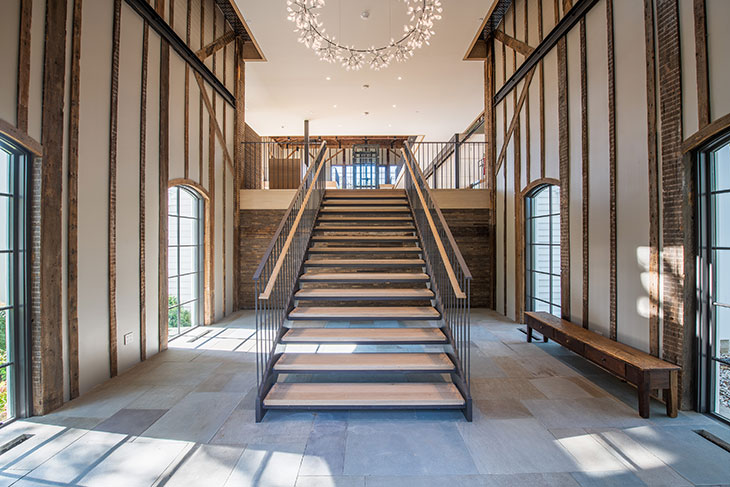
Inside the renovated Sag Harbor Church. Photo: Michael Heller
Sunil Gupta
My positive moment was stretched out over the long opening day of my retrospective exhibition at the Photographers’ Gallery at the end of September, after postponements and delays and all the uncertainties of lockdowns and partial lockdowns. It had taken five years for the curator, Mark Sealy, and myself to get there and it was amazing to welcome everyone to see something that even I was seeing for the first time – a series of bodies of works stretching back to the early 1970s. As a visual artist I’ve discovered that fortunately it’s possible to keep working, even in an epidemic of these proportions.
Hicham Berrada
In 2020 I was happy to work with the Raqs Media Collective, who curated the seventh edition of the Yokohama Triennale. Published in the Sourcebook that accompanied the exhibition, their reflection about toxicity – how to acknowledge its existence, how to handle it – touched me. I have thought multiple times during this year about what they wrote regarding the light emitted by corals: ‘Sunbursts induce some coral species to react to the toxicity of the sun’s ultraviolet waves. In return, they emit their own bits of photo-protective bio-fluorescence – beautiful luminous patterns that end up illuminating, caring for, and protecting the organism from stressful solar radiation.’
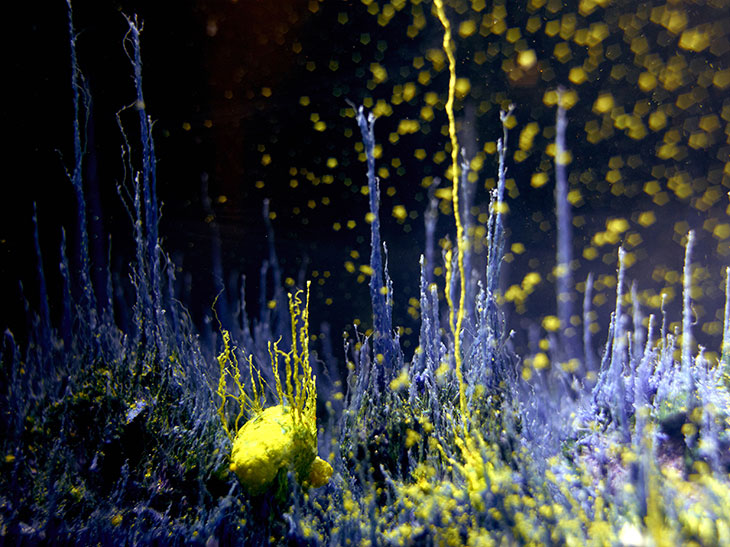
Still from Présage (2007–ongoing), Hicham Berrada’s contribution to the Yokohama Triennale in 2020. Courtesy the artist and kamel mennour, Paris/London; © Hicham Berrada, © ADAGP
Annie Morris
One of the highlights in recent months also includes Idris [Khan] – we share a studio. We both made a limited edition screenprint to raise money for Make-a-Wish, which is an amazing charity that helps terminally ill children. That was something really lovely that has just launched in these last few days. Idris also made a beautiful face mask based on one of his music works, which he worked on with Deutsche Bank [and Frieze], to raise money for a fellowship for a curator at the Chisenhale Gallery. It’s done really well so they’re doing another year and working on another fellowship at the Baltic. I love that project because it really helps the arts and it’s really special in that way.
It’s difficult to talk about other artists because we haven’t seen the amount of things that we would have seen. I did see the amazing Rashid Johnson show [at Hauser and Wirth], which I loved. I don’t think there are that many things that I’ve been able to see, that’s the problem. But we haven’t stopped work: we’ve been going nuts making as much as possible, trying to make as many charity works as we can and also making works for exhibitions.

Two Hills (2020), Annie Morris’s screenprint for Make-a-Wish UK
Conrad Shawcross
In early May, my family and I left the UK for France. We had a mandate to travel as I had a show that was about to reopen at Château La Coste in Provence and a huge 35-ton sculpture of mine, Schism, needed to be installed. I had made a deal with La Coste that if we managed to make it out there, in exchange for them putting my family up and feeding us, I would install the 35-ton sculpture myself for free over a three-week period. Normally this kind of process would be carried out by a professional art handler at a considerable cost and I would only fly in for key moments to oversee and sign off. But I have always loved this stage of a project and have really missed having the time for it. One good thing to have come from this wretched year is it has made us all stop, pause and think. The appraisal of what really matters was often forgotten in our previously quite automatic and frenetic lives. I have definitely become more conscious and reflective, both incredibly important qualities for an artist to hold on to and exercise.
At La Coste there were no art handlers operating, no insurance for staff – just me with a bunch of hand tools I’d brought in the back of our C-Max. I had really been looking forward to rolling my sleeves up but the task was daunting. Schism consisted of 19 steel tetrahedrons each weighing 1.5 tons and 3.5m in length. It had been designed as a vast flat-pack system of interlocking steel planks, 12 of which formed a tetrahedron: each plank weighed 120 kg. It was just about possible for two people to move them around and lift them into place. The legendary local restaurant on the estate, Mallmann, was still closed and there I found two out-of-work Argentinian cooks, Diego and Marcus, who became my main assistants each day.
It took ten days of back-breaking work to assemble the tetrahedrons in a large dusty yard before transporting each one with a digger to its perch above a vineyard and starting the complex process of assembling the cracked puzzle. I loved being back at the coalface, problem-solving and pushing the limits of what was possible with the very limited resources at my disposal. It was one of the most rewarding things I’ve done in a long time and would not have happened if not for Covid. So one silver lining.
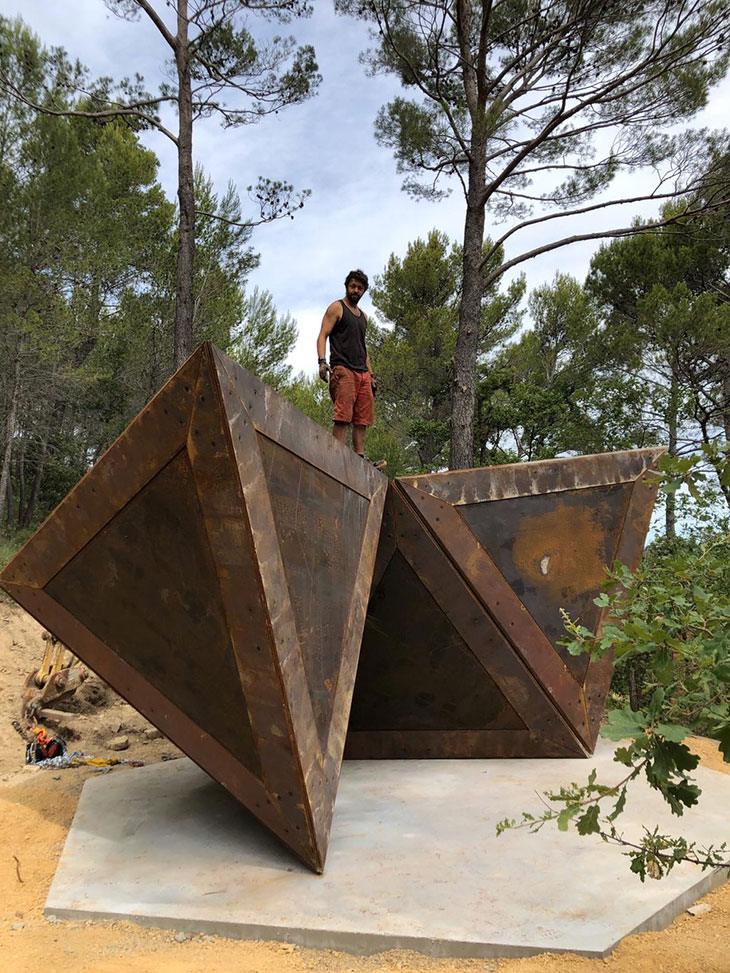
Installing Conrad Shawcross’s Schism (2020) at Château La Coste
Unlimited access from just $16 every 3 months
Subscribe to get unlimited and exclusive access to the top art stories, interviews and exhibition reviews.


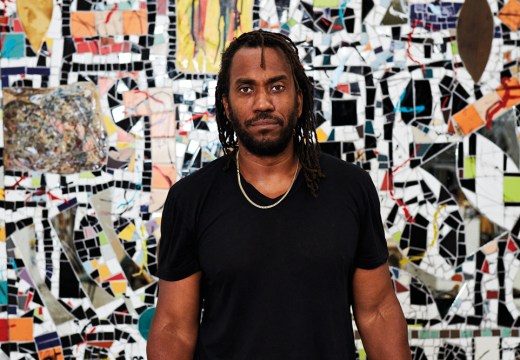
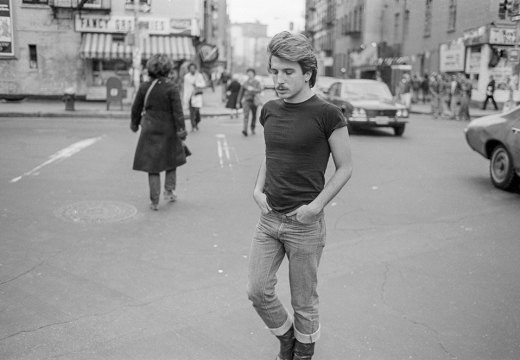
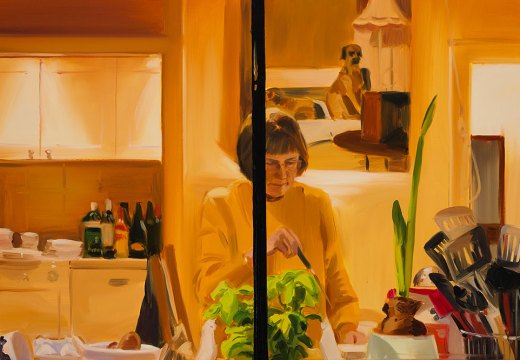









![Masterpiece [Re]discovery 2022. Photo: Ben Fisher Photography, courtesy of Masterpiece London](http://www.apollo-magazine.com/wp-content/uploads/2022/07/MPL2022_4263.jpg)
Has the Fitzwilliam got its rehang right?